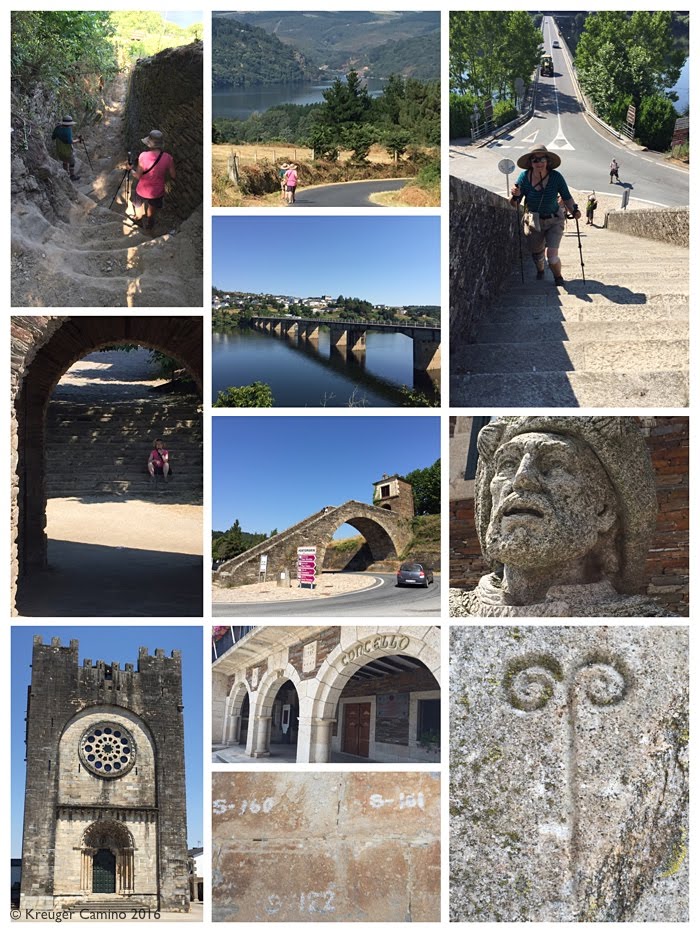
We had a hot but relatively quiet night's sleep. The twenty plus school students who checked into our Albergue at 8:00 and woke the baby in the next room had quieted down by 9:00 and the baby had cried herself to sleep. Distant drumming and undulating waves of muted cheers provided the soundtrack to a deep sleep, so deep that we slept an hour longer than we intended.
We quickly roused ourselves and completed our morning routines with the focus and attention of zombies. Breakfast, foot care, sunscreen, teeth cleaning, ablutions --all carried out in perfunctory silence. I barely stopped myself from brushing my teeth with Voltarin.
We wended our way through Sarria up to the church and ancient quarter. The streets were littered with straw and adorned with beautiful cloth banners and heraldry. It soon became apparent that we had slept through the Primera Fiesta Irmandiña de Sarria, a medieval festival celebrating a peasant revolt that occurred in the 1400s. It looks like we missed a great party!
As we left town it was clear that something had changed--we were not alone. Hundreds of pilgrims now filled the trail, like the ants that had crossed our path on the meseta, marching in columns and carrying loads several times their body weight [note to self: fact check ant--back pack comparison]. Sarria is the closest city to the 100 km radius of Santiago de Compostela and therefore the minimum distance for a pilgrimage to qualify for holy certification. Most of the additional perigrinos are Spanish and they, now, far outnumber the rest of us. The trail is no longer quiet and pensive, but exciting and festive. The subtext of the conversations, unintelligible to my ears, was "we can do this...we will do this!" By mid morning we were walking though hay country and saw an old gentleman farmer raking his crop by hand. We also marked the 100 km point with a group photo.
As we descended to our destination of Portomarin we were impressed by its setting beside the dammed Rio Miño. In the 1960s the river was dammed to create the Belesar reservoir, putting the old village of Portomarín under water. The most historic buildings of the town were moved block by block and reconstructed in the present site, including the Church of San Juan of Portomarín. To make sure that the reconstruction of the church was faithful to the original in both appearance and engineering, workers numbered each stone. (The funny thing is it still looks like a kid put it together with Lego!) Some of the numbers are still visible on the blocks today, as well as some mysterious etchings that date back to the days when the blocks were originally quarried in the Middle Ages.


